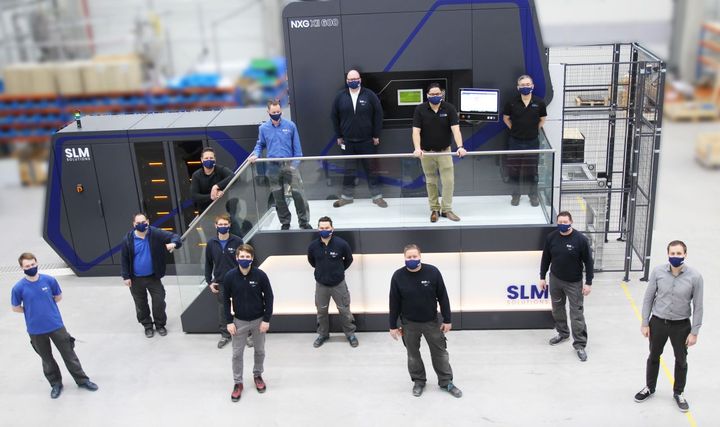
It’s likely we will see increasingly larger 3D printers in the future.
A post by SLM Solutions triggered my thoughts about large-format 3D printing. In the post it was explained the company is now training on their massive metal 3D printer, the NXG XII 600, which is now shipping to customers.
This is indeed a massive device, as it includes no fewer than twelve 1kW lasers and an enormous 600 x 600 x 600 mm build volume. In spite of the gigantic part sizes possible in this machine, it prints quite speedily due to the parallel operation of the multiple lasers.
The NXG XII 600 is a breakthrough machine in several ways, but it is likely a harbinger of what’s to come. It may be that industry will increasingly adopt large-format 3D printers as time passes.
Why so? I believe there are several compelling reasons that will slowly drive industry towards these behemoth machines.
The main reason is that there is a market for very large metal parts. Today they’re made using conventional means, but there is an opening in the market for 3D printed equivalents.
These conventional parts have not been optimized in the way that 3D printed parts can be. It merely requires applying the same techniques that have been done to smaller metal parts in aerospace and automotive, except on a larger scale.
This hasn’t been done yet because there really haven’t been practical ways to 3D print large metal parts. But if machines existed to do so, then this effect would take hold.
Another driver is likely to be reduced assembly costs. Those familiar with 3D print technology are aware that it’s possible to produce highly complex parts with a reduced number of parts. This is because conventional manufacturing processes cannot handle the complex geometries required for a part made in a single step.
But those constraints are removed with 3D printing, and in fact this has been exploited particularly in the aerospace industry, where we’ve seen rocket engines produced with hundreds of fewer parts. This leads to less assembly time, more reliable parts (no joint seams) and often less weight as there are no bolts and lugs to hold the parts together.
This effect has been leveraged on smaller metal parts, but everyone knows there are also complex larger parts that can also take advantage of the same effect. Thus, I believe that when larger-volumed metal 3D printers appear we will soon see incredible one-print parts that dramatically reduce assembly time and increase part performance. Why print two or more smaller complex metal parts and join them together when you could print the entire component?
The appearance of these advanced larger parts will put competitive pressure on the industry and could drive a switch to 3D printing technology.
Finally, there is the matter of unit counts. The most attractive applications for 3D printing involve smaller unit volumes, because mass manufacturing will be less expensive the higher the volume goes. However, for very large metal parts there is almost always a limited market, and thus limited unit quantities.
These factors suggest an ideal business environment for large-format metal 3D printing could exist, and is just waiting for equipment to become available. SLM Solutions has taken a step towards that zone, but there is much more to come.
